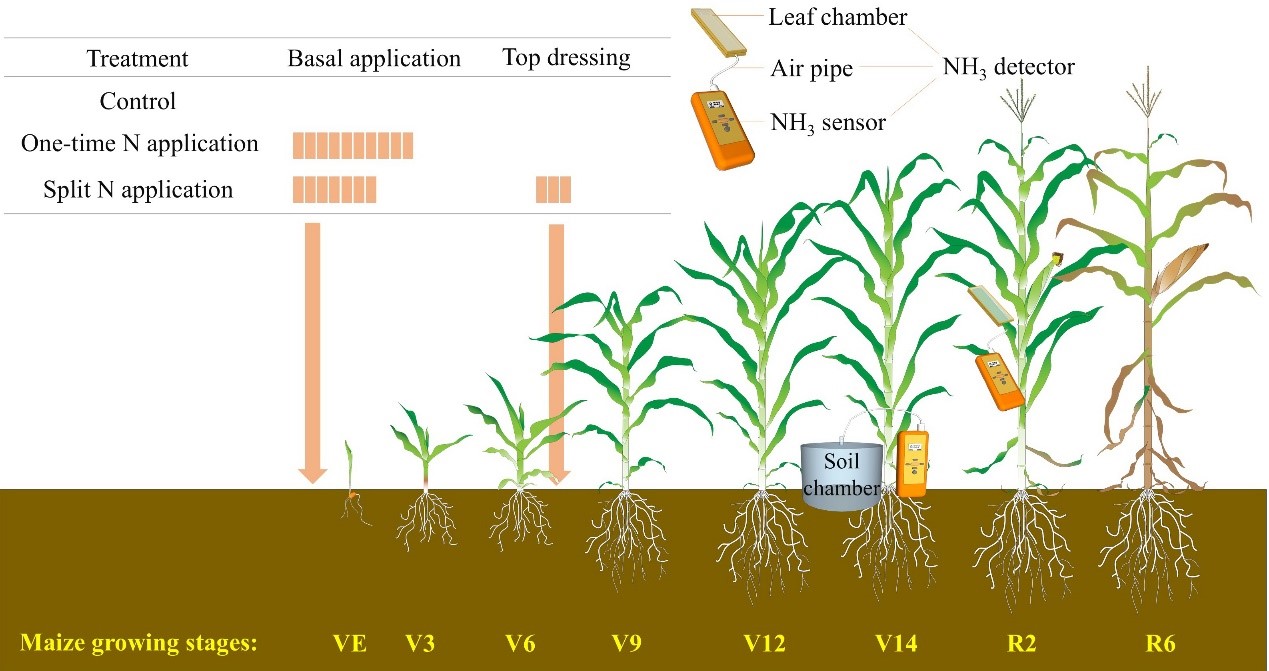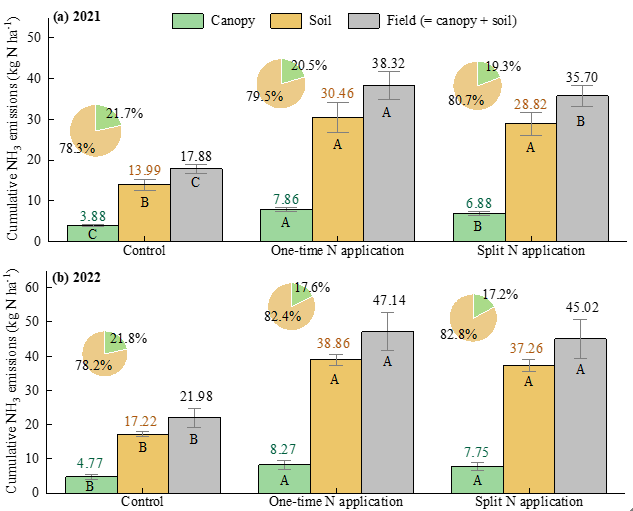
Recently, a research team in the Hefei Institutes of Physical Science of the Chinese Academy of Sciences has revealed that one-time nitrogen (N) application, a labor-saving practice favored by many farmers, increases both soil and canopy ammonia (NH3) emissions in maize fields, while reducing grain yield and nitrogen use efficiency.
The research results were published in Atmospheric Pollution Research.
The findings are based on a two-year field experiment in Hefei, China.
In the study, the researchers compared plots that received no nitrogen, plots that received all nitrogen as a single early dose, and plots where the nitrogen was split between an early application and a later topdressing. By using portable NH₃ detectors, they measured how much ammonia escaped from the soil and from the maize leaves, which together represent the total field NH₃ loss.
Compared to split nitrogen application, one-time nitrogen application led to higher canopy and soil ammonia emissions, while lowering both grain yield and nitrogen recovery efficiency.
“High soil ammonium (NH4+) concentration and low soil moisture in one-time N application drove more soil NH3 loss, while large leaf area and high leaf apoplast NH4+ concentration boosted canopy emissions,” explained Dr. YANG Yang, a member of the team, “Our results highlight that split N application is a more sustainable choice with lower NH3 emissions and better maize productivity.”
The findings provide practical insights for optimizing fertilizer use and reducing air pollution from agriculture.
The work was supported by the National Key Research and Development Program of China.

Scheme of fertilization mode and intelligent sensing device for ammonia emissions. (Image by YANG Yang)

Ammonia emissions in maize fields under different fertilization modes (Image by YANG Yang)